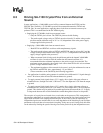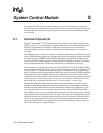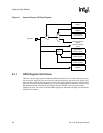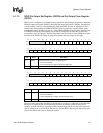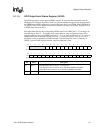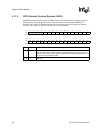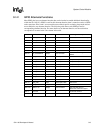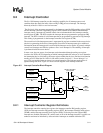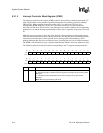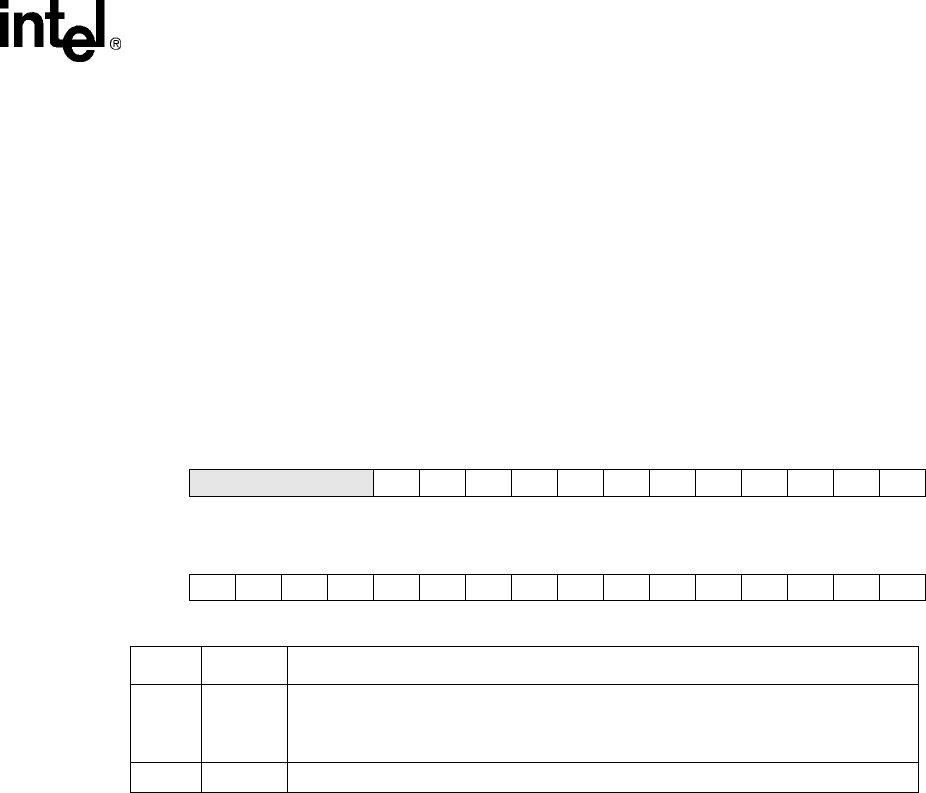
SA-1100 Developer’s Manual 9-7
System Control Module
9.1.1.5 GPIO Edge Detect Status Register (GEDR)
The GPIO edge detect status register (GEDR) contains 28 status bits that correspond to the 28
GPIO port pins. When an edge detect occurs on a pin that matches the type of edge programmed in
the GRER and/or GFER registers, the corresponding status bit is set in GEDR. Once a GEDR bit is
set, the CPU must clear it. GEDR status bits are cleared by writing a one to them. Writing a zero to
a GEDR status bit has no effect.
Each edge detect that sets the corresponding GEDR status bit for GPIO pins 0 – 27 can trigger an
interrupt request. Pins 27 – 11 together form a group that can cause one interrupt request to be
triggered when any one of the GEDR status bits 27 – 11 is set. Each of GPIO pins 10 – 0 causes an
independent first-level interrupt. See the Section 9.2, “Interrupt Controller” on page 9-11 for a
description of the programming of GPIO interrupts. The following table shows a summary of
GEDR; a question mark indicates that the values are unknown at reset.
Bit31302928272625242322212019181716
R/W Reserved ED27 ED26 ED25 ED24 ED23 ED22 ED21 ED20 ED19 ED18 ED17 ED16
Reset0000????????????
Bit1514131211109876543210
R/W ED15 ED14 ED13 ED12 ED11 ED10 ED9 ED8 ED7 ED6 ED5 ED4 ED3 ED2 ED1 ED0
Reset????????????????
Bit Name Description
{n} ED{n}
GPIO edge detect status n (where n = 0 through 27).
0 – No edge detect has occurred on pin as specified in GRER and/or GFER.
1 – Edge detect has occurred on pin as specified in GRER and/or GFER.
31..28 — Reserved.



